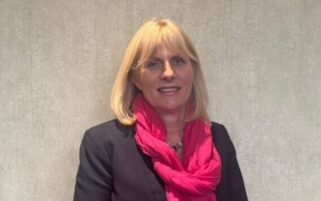The Richmond General Practice Alliance (RGPA) is using new technology to provide 12-hour, seven-day care to patients in the London borough and to give its GPs the ability to provide better care in the community.
RGPA is the first federation in the country to offer end-to-end ‘interoperability’ whilst supporting extended access with the use of Vision 360, which it implemented in September 2015.
Patients from Richmond can book into four dedicated practices, or hubs, to see a GP from 8am–8pm, seven days a week, regardless of where they are registered. Vision 360 enables staff working in different locations to access and view the same information, at the same time in order to book patients into extended hours appointments.
The project has enabled an additional 1,100 appointments per week, increasing the outcomes and health of the Richmond population.
They also use Vision Anywhere to enable GPs to access and update patient records on the go when making house calls or visits to care homes etc.
IT project lead for RGPA, Grant Oliver spoke to Management in Practice about the impact the technology has had on the running of practices within the federation.
What kind of new technology does the federation use?
In Richmond we have 28 practices. We have 22 that use Vision and we have six that are running EMIS. What we’ve been able to do for our 8am to 8pm working is to have interoperability between the two systems. And we were the first in the country to do this, so we’re quite proud of that.
That enables GPs sitting in one of our 8am to 8pm hubs to see all 200,000 patient records, whereas before there would have been a lot of paper going around the system. And of course, the great thing is the GPs like it because they can see the full patient record and they’re not blind to any information.
Can you give an example of the Vision Anywhere software in action?
Say if I call my home practice in Richmond, and say ‘Have you got an appointment please?’ and they say ‘No, we haven’t got anything for a couple of days, but we have got one in one of the hubs’.
They would then direct me to a hub, which may be in the same practice or it’ll just be down the road, and then I would go into that hub and the doctor working in the hub would be able to see my patient record.
Prior to this, they wouldn’t have been able to see it at all; they wouldn’t have had any knowledge about me as a patient. So it’s a bit like if you went into A&E, it’s highly unlikely they’ll know anything about you. But of course, with the hubs now, it means that the doctor can see the patient’s record, he can see any medication they’re on and any previous treatments there’s been.
What effect has it had on staff?
We have four hubs but they are attached to practices within Richmond and the GPs that we use in there are typically from one of our practices where they want to do extra shifts. Interestingly, when we announced we were doing this, it brought a number of other GPs back into the workforce who hadn’t really been doing very much work because of childcare of whatever, and this has enabled us to bring in a lot more GPs.
A lot of them were doing very minimal amounts of work because it wasn’t flexible enough for them, so this flexibility – because they can do four-hour shifts in the hubs, has given them a lot more flexibility and they can choose which days they want to work on.
How has the app changed patient care?
The old way of doing it was you’d often have to take some sort of paperwork with you, and go out and do a home visit.
Now our rapid access team, when they go out to see patients at home to try and avoid them going into A&E, they have access to all of those patient records.
If you imagine, if you’re going into a care home to see Mrs Smith, and you knew you were going to see Mrs Smith and you would take – in the old days – a hard copy of some information about her.
What this now allows us to do is to have the full record available, but the big benefit is if you then suddenly needed to also see Mr Brown in the care home, previously you didn’t know anything about Mr Brown but now using Vision Anywhere you can pull up his patient record.
What has the feedback been like?
Very positive, and again, likewise with patients, we’ve seen about 50,000 patients since we’ve been running the operation and the feedback is very positive because, I’m not saying they didn’t get good treatment before but because you can see all of the patient record, the GP is much better informed and they get a better consultation.
How have practice managers reacted?
It’s very easy to use. It literally takes a few minutes to train the receptionists and the practice managers to use it, so it’s very straightforward. The GPs like it a lot because it’s much more intuitive than the old systems, and again, I tend to train the GPs – it literally takes 20 minutes to get them up and running and they go ‘This is really nice!’ It’s got a much nicer interface.
How has this improved patient experience?
We have a walk-in centre, and we’ve certainly seen a reduction in the number of people going there, again because if you turn up in the walk-in centre the nurse or the GP doesn’t know anything about you, and of course, if you come into one of our hubs they’ve got your full patient record. So it’s a much richer experience for both the GP and the patient.
Would you recommend this type of technology to smaller practices, not in a federation?
Oh yes, we’re trialling it with a number of our practices because if a GP from a practice that goes out to do a home visit or a care home visit they can use that technology, and it’s brilliant for them.
We are planning to make this a blanket strategy across the whole federation because we see it as a huge bonus to people.
Did you have to let your patients know about the changes?
From a patient perspective, I think the only issue that we address is the consent issue. And people get very hung up – not just us but across the NHS – about consent. The way it works is, during a home visit a screen pops up for the doctor on the app which requires the patient’s permission to view their records. The doctor says ‘Can I have your consent to look at your patient record?’ And the patient says ‘Yes’. They could say no, but of our 50,000 patients, only one has ever said no. Most patients say, ‘Why are you asking me the question, because I’ve assumed you’ve already got access to that information’. It’s the same as when they come into our hubs and maybe see a doctor who is not their usual GP.
Does it reduce workload for non-clinical staff too?
It does because we don’t have this paper in the system. Whereas if you think of the way it used to work, you’d have to write the consultation on a piece of paper; that piece of paper would then have to be saved by the doctor, printed out, and then it gets sent from the practice back to the home practice. All of that has disappeared.
Has this saved your federation money overall?
Although we can’t give an absolutely definitive, direct correlation between the technology and our finances, our belief is that it has saved us money because we’re not using some of the more expensive services like the walk-in centre anywhere near as much. A&E’s cost I think is more difficult to calculate because of all the other initiatives that are going on, but we certainly haven’t seen it increased as much as perhaps other parts of the country.



